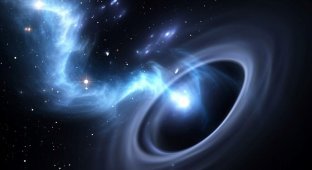If the stars are shining, it means someone needs them. A guide to the Galaxy (17 photos)
Our Universe is full of wonders and mysteries. A story about deep space objects, both real and hypothetical. Particularly dangerous are blazars—essentially "death stars"—whose beams kill everything within 10 light-years of their path.
Reference Our address: Earth, Solar System, Orion Arm of the Milky Way Galaxy, Virgo Supercluster... 
Red Giant 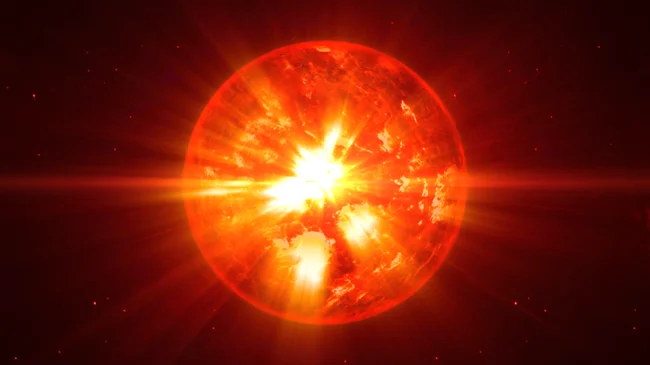
A red giant is the final stage of a star's evolution.
A star becomes a red giant when all the hydrogen in its center is converted to helium, and thermonuclear hydrogen burning continues at the periphery of the helium core.
All red giants have a similar structure: a hot, dense core and a very tenuous and extended outer shell. This leads to increased luminosity, expansion of the outer layers, and a decrease in surface temperature. This also leads to an intense stellar wind—the outflow of matter from the star into interstellar space.
A "red giant" star has a low surface temperature and a huge radius. The radius of a red giant can reach 800 solar radii, and its luminosity can be 10,000 times that of the Sun.
Aldebaran, Arcturus, and Gacrux are red giants, among the brightest stars in the night sky. However, red giants are not the most massive. The largest stars are red supergiants: their radii can be 1,500 times greater than the Sun's. 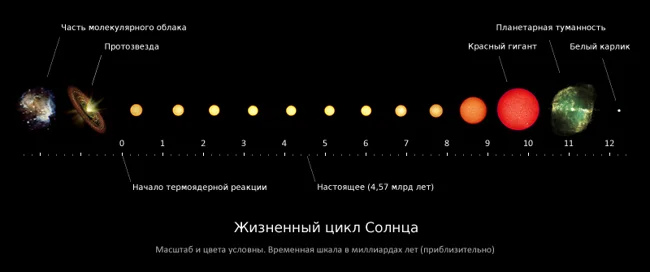
The fate of a red giant depends on its mass.
If the mass is relatively small, the star will turn into a white dwarf; if it is large, it will turn into a neutron star or even a black hole—anything can happen.
White Dwarf 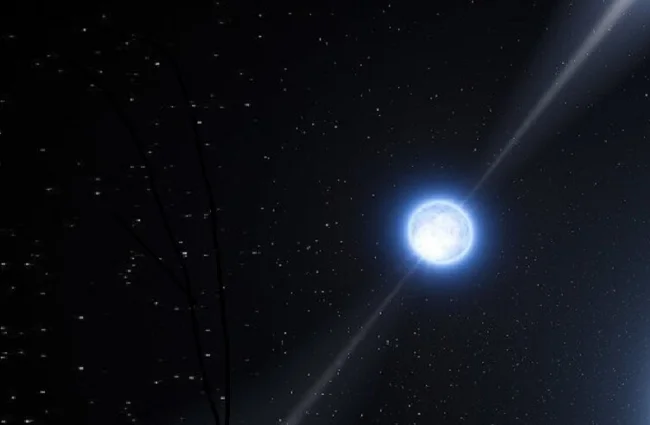
The name itself comes from the color of the first stars discovered, such as Sirius B (its size, incidentally, is quite comparable to that of Earth).
Due to their low luminosity, they are very difficult to detect. An "old" white dwarf is no longer actually white, but the name has become common.
In fact, a white dwarf is not a star at all, since thermonuclear reactions no longer occur in its core. Simply put, a white dwarf is not a star, but its "corpse."
While the mass of a "white dwarf" is comparable to the mass of the Sun, the radius of white dwarfs is approximately 100 times smaller than the radius of our Sun.
They are "born" when red giants "shed" their outer shell, which dissipates into interstellar space as a planetary nebula. The remaining cold, almost non-radiating helium core is called a white dwarf.
White dwarfs make up 3-10% of the stellar population of our Galaxy. 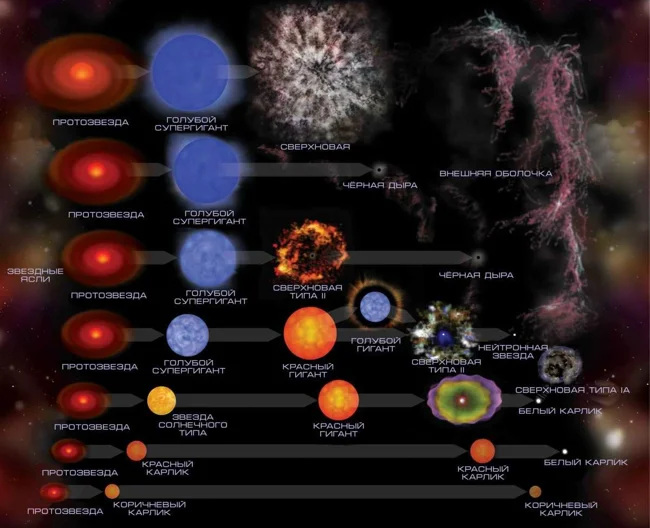
Stars have different fates.
As the white dwarf evolves, it cools even more, and its color changes from white to red.
The final stage of such an object's evolution is a cooled black dwarf. Another possibility is the accumulation of material "flowing" from another star on the white dwarf's surface, resulting in compression and a subsequent explosion as a nova or supernova.
Yellow Dwarf 
The star named Sun is a typical yellow dwarf. It's a shame for the star.
Yellow dwarfs are small stars with masses ranging from 0.8 to 1.2 solar masses. These stars are part of the so-called main sequence.
On the Hertzsprung-Russell diagram, this is the region containing stars that use the nuclear fusion reaction of helium from hydrogen as their energy source: 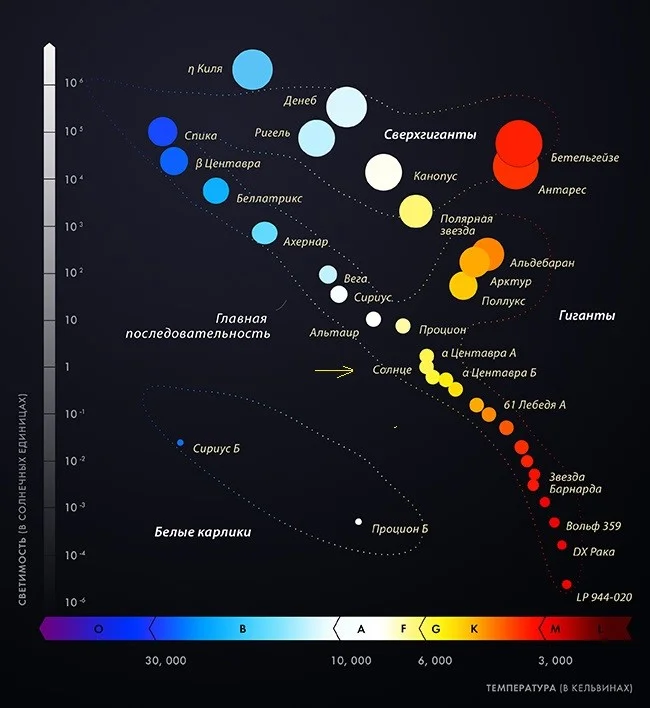
The luminosity of stars is measured in "suns."
Yellow dwarfs have a surface temperature of 5,000–6,000 Kelvin (at the center, 15–16 million K) and an average lifetime of 10 billion years. Such stars transform into red giants after burning all their hydrogen.
Our Sun will become a red giant in about 5–7 billion years, and then turn into a white dwarf. By that time, all the good guys will have migrated to other planets in other star systems.
Brown Dwarf 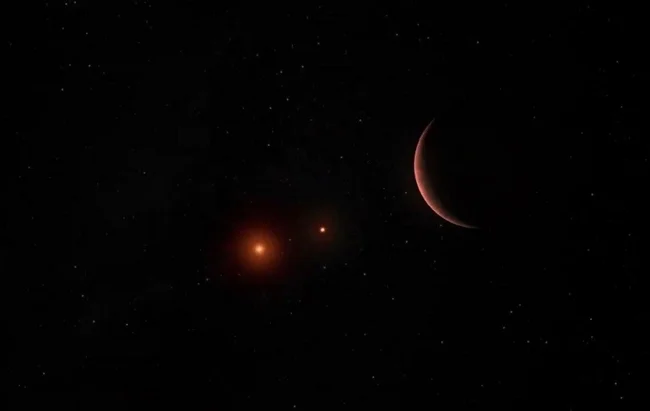
A brown dwarf is a very unusual object, dark red or even infrared in color, difficult to classify. It's something between a star and a gas planet. Brown dwarfs have a mass equal to 1–8% of the Sun's. They are too massive to be planets, and their gravitational compression allows for thermonuclear reactions involving highly combustible elements. However, their mass is insufficient to ignite hydrogen, and a brown dwarf's luminosity is relatively short-lived compared to a normal star.
The surface temperature of a brown dwarf can be 300–3000 K. It continuously cools throughout its life: the larger the object, the slower this cooling occurs. Simply put, a brown dwarf heats up due to thermonuclear fusion during the first stage of its life and then cools, becoming more like a normal planet.
Double Star 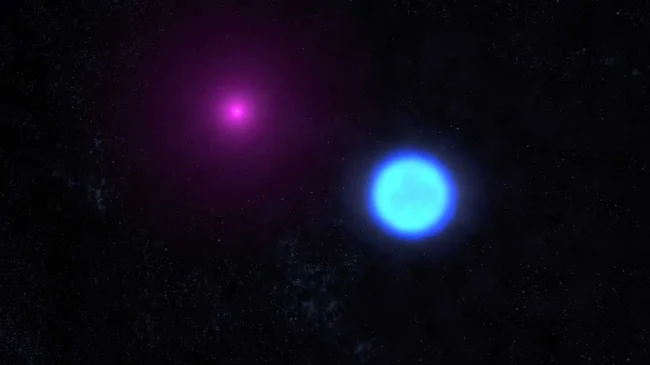
A binary star (or binary system) is two gravitationally bound stars orbiting a common center of mass.
A binary star seems quite exotic, but they are very common in the Milky Way galaxy. Sometimes, even systems consisting of three stars can be found. Some researchers believe that approximately half of all stars in the galaxy are binary systems. Others, apparently, disagree.
Supernova There are two types of supernovae. 
A supernova is a phenomenon in which a star's brightness sharply increases by 4-8 orders of magnitude and then gradually decreases—an explosion in which the star is completely destroyed.
Such a star temporarily outshines other stars: this is not surprising, as its luminosity during an explosion can exceed that of the Sun by 1 billion times.
In galaxies comparable to our own, the occurrence of a supernova is recorded approximately once every 30 years. However, observation of the object is hampered by stardust, as the explosion sends a huge volume of matter into interstellar space. The remaining matter could become the building blocks of a neutron star or a black hole, depending on luck.
Type I supernovas lack hydrogen in their optical spectrum. Therefore, scientists believe that such supernovae originated from the explosion of a white dwarf. Because it has no hydrogen, such white dwarfs must be part of a binary star. At a certain point, matter from the second star begins to "pump" onto the white dwarf, and when it reaches critical mass, there's a big, bright boom. Bada-boom.
In Type II supernovae, researchers detect hydrogen in the spectrum. This means that it's not yet a white dwarf, but an "ordinary" star that has exploded. The core of a Type II supernova eventually becomes a neutron star.
Neutron Star 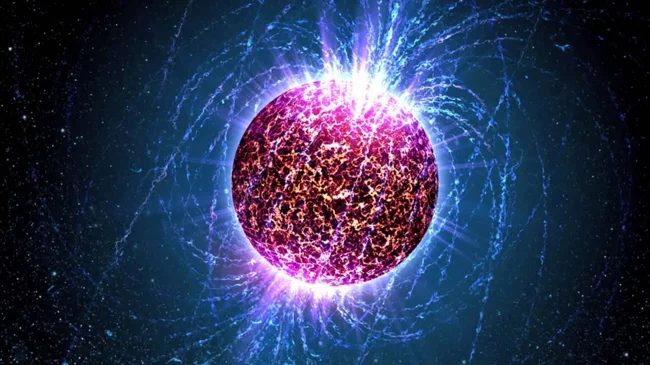
A neutron star consists primarily of neutrons—heavy elementary particles without an electric charge. Neutron stars are formed by the gravitational collapse of normal stars. Due to gravity, the stellar masses begin to draw toward the center until they become incredibly compressed. As a result, the neutrons become densely packed.
Such an object has a thin atmosphere of hot plasma, an outer crust of ions and electrons, an inner crust of electrons and free neutrons, and outer and inner cores of densely packed neutrons. Many neutron stars rotate very rapidly—up to hundreds of revolutions per second.
A neutron star is small—usually its radius does not exceed 20 km. Most such objects have a mass of 1.3–1.5 solar masses; theory allows for the existence of neutron stars with masses up to 2.5 solar masses.
It is said that the density of a neutron star is so great that a single teaspoon of its material weighs billions of tons.
Pulsar 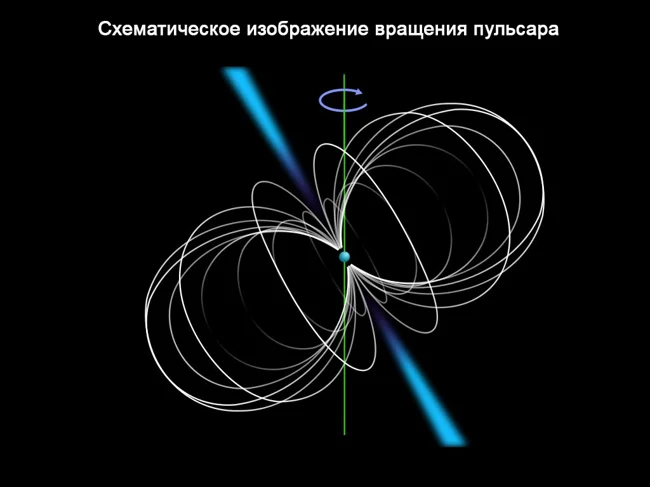
Pulsars are neutron stars that emit radio, gamma, optical, and X-ray radiation, which instruments detect as pulses.
The rotation axis of such a star does not coincide with the axis of its magnetic field. A pulsar emits radiation along the axis of its magnetic field—from its magnetic poles.
And since the star rotates around its axis, we on Earth can only observe radiation when the pulsar's magnetic pole points toward our planet. This can be compared to a lighthouse: to an observer on the shore, it appears to blink periodically, although in reality, the searchlight is simply turning in the opposite direction.
In other words, we observe some neutron stars as pulsars because one of their magnetic poles points toward Earth as they rotate.
Perhaps every neutron star is a pulsar—it's just facing us the wrong way each time it fires.
The best-studied pulsar is PSR 0531+21, located in the Crab Nebula at a distance of 6,520 light-years from us. This neutron star rotates 30 times per second, and its total radiation power is 100,000 times greater than that of the Sun.
However, many aspects of pulsars remain to be studied.
Quasar 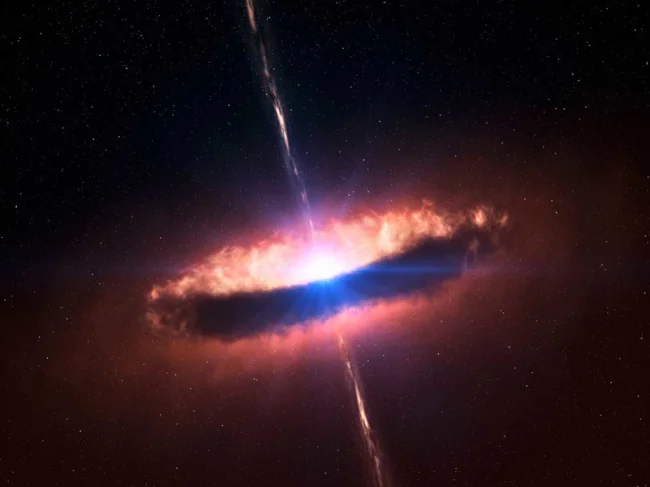
Pulsars and quasars are sometimes confused, but the difference between them is significant.
A quasar is a mysterious object whose name comes from the phrase "quasi-stellar radio source." Such objects are among the brightest and most distant from us. In terms of radiation power, a quasar can be a hundred times more powerful than all the stars in the Milky Way combined.
Naturally, the discovery of the first quasar in 1960 sparked incredible interest in the phenomenon. Scientists now believe that a quasar is an active galactic nucleus. There's a supermassive black hole there, pulling matter from the space around it. The hole's mass is simply gigantic, and its radiation power exceeds that of all the stars in the galaxy.
The closest quasar to us is 2 billion light-years away, and the most distant, due to their incredible visibility, can be observed at a distance of 10 billion light-years.
Blazar 
Blazars are quasars that emit powerful plasma beams (called relativistic jets), visible to observers on Earth.
Two beams emanate from the blazar's core, directed in opposite directions. These streams of radiation and matter can destroy all life in their path. If such a beam passes within 10 light years of Earth, life will no longer exist.
The name itself comes from the words "quasar" and "BL Lacertidae." The latter is a typical representative of a subtype of blazars known as Lacertidae.
This class is distinguished by the peculiarities of its optical spectrum, which lacks the broad emission lines characteristic of quasars.
Scientists have now determined the distance to the most distant blazar, PKS 1424+240: it is 7.4 billion light years.
Black Hole 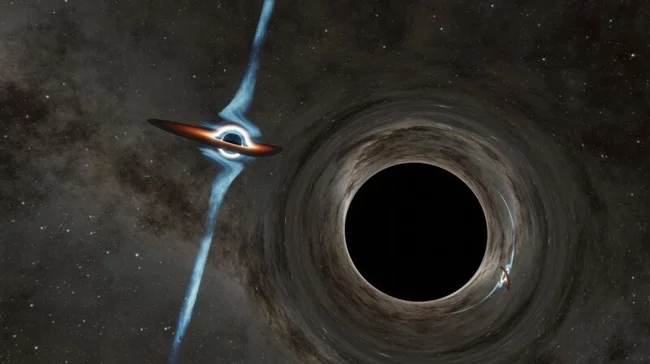
Without a doubt, this is one of the most mysterious objects in the Universe.
Much has been written about black holes, but their nature remains a mystery.
The escape velocity (the speed needed to overcome the gravity of a celestial body and escape its orbit) for them exceeds the speed of light!
Nothing can escape the gravity of a black hole.
It is so enormous that it practically stops time. A black hole is formed from a massive star that has exhausted its fuel. A star collapses under its own gravity, dragging the space-time continuum around it with it.
The gravitational field becomes so strong that even light can no longer escape.
As a result, the region where the star once resided becomes a black hole.
In other words, a black hole is a curved region of the Universe. It sucks in matter located nearby. Einstein's theory of relativity is believed to be the first key to understanding black holes.
Wormhole 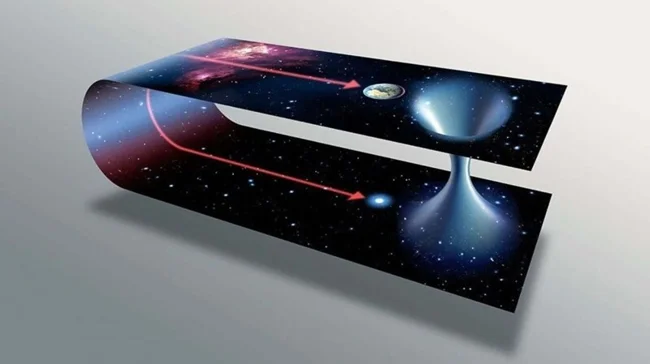
Wormholes are currently only hypothetical objects. They are imagined as space-time tunnels consisting of two entrances and a throat. A wormhole is a topological feature of space-time that (hypothetically) allows for the shortest possible travel path. To imagine a wormhole, one could fold a sheet of paper (symbolizing our space-time) and then poke it with a needle. The resulting hole would resemble a wormhole. If one were to move along the surface of the paper from one hole to the other (which is all we can do in our reality), it would be a long journey, but hypothetically, one could also pass through the hole and immediately arrive on the other side.
The possibility of something like this existing is demonstrated by general relativity, but no wormhole has yet been discovered.
Dark Matter 
Dark matter is also present in this photo, but no one can see it yet.
Almost a hundred years ago (or rather, first discovered in 1933 by Fritz Zwicky), astronomers discovered inconsistencies in the cosmos: the gravitational properties of many, many galaxies differed significantly from those calculated based on the stars visible in them. It was as if some invisible objects, with their mass, were creating the necessary additional gravity to keep the galaxies' stars from scattering throughout space and remaining within their home galaxy. Moreover, these "dark objects" should contribute up to 90% of the calculated gravity. Gravity exists, but the objects don't. So, we simply don't see them. Well, it's not worth changing such a good theory because of this annoying inconsistency. And everything immediately became clear: "Ah, well, it's just dark matter."
And then they had to add dark energy to the infinity of space, but that's a whole other story.












